

We may earn revenue from the products available on this page and participate in affiliate programs. Learn More ›
Highlights
- The typical cost to mow a lawn ranges between $48 and $206, with a national average cost of $124 per visit.
- There are several factors that can affect lawn-mowing costs, including the size and shape of the lawn, the accessibility of the area, the health and condition of the lawn, the length and type of grass, the mowing frequency, and the cost of labor.
- It’s time to mow the grass when it gets too long, is discolored, or has excessive weed growth. Additionally, some local laws may require a resident to keep their grass at a certain length or face a fine.
- Lawn mowing can be a DIY project for many homeowners, but hiring a professional can save a homeowner time and result in a healthier lawn.
It takes a lot of hard work to keep a lawn healthy and vibrant. That’s why many homeowners opt to hire a mowing service to maintain their lawn. According to Angi and HomeAdvisor, the average lawn-mowing cost ranges from $48 to $206, with the national average at $124. The biggest factor that affects the overall cost is the size of the lawn. Typically, the more grass that needs to be cut, the more expensive the lawn-cutting service will be. Additional services, such as installing a new lawn, weed pulling, fertilizing, leaf cleanup, edging, aeration, laying sod, or seeding will add to the lawn-service cost.
Labor is typically calculated by the hour, with many landscape professionals charging $25 to $60, although some charge a flat fee per job. Watering and mowing the lawn are commonly less expensive than other lawn-service jobs with difficult-to-reach areas or projects that require more than one person to complete. Lawn-care professionals will price their services by the square foot or acre, especially if the area to mow is very large. Some may offer year-round services which can lower the average cost for lawn mowing each time they visit compared with paying per visit. Search online for “grass-cutting services near me” to find reputable professionals in your area.
Factors in Calculating Lawn-Mowing Cost
The average cost of lawn mowing in your area depends on several factors. Prices can differ from the national average because of the lawn size and shape, accessibility, the health and condition of the lawn, length and type of grass, mowing frequency, labor, and geographic location.
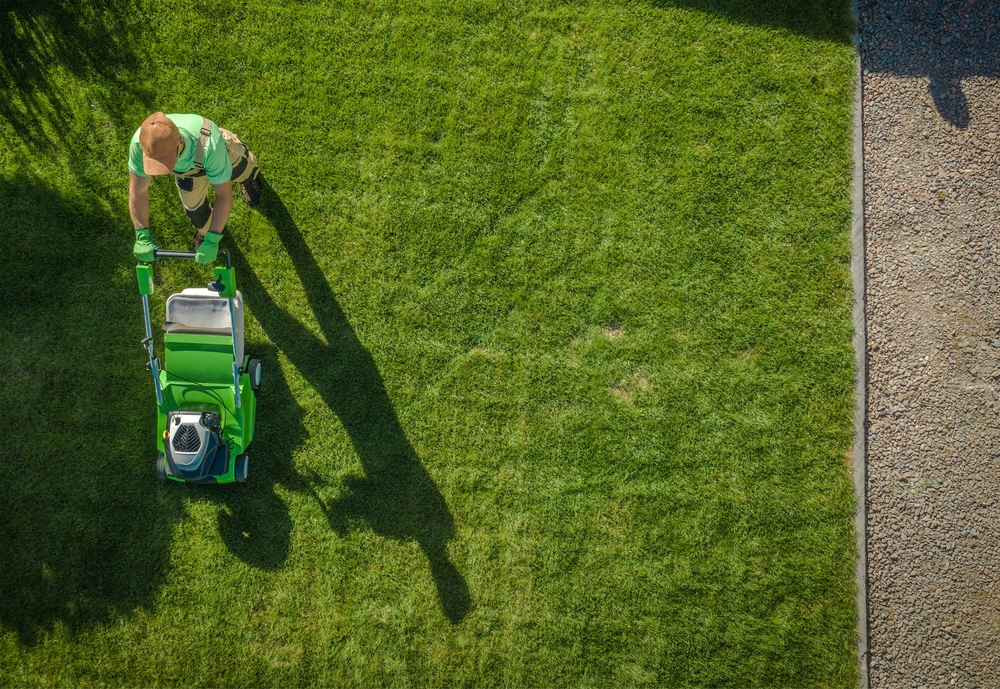
Lawn Size and Shape
The average cost of lawn mowing by a professional ranges from $48 to $210, depending on the size and shape of the lawn. Expect to pay from $0.01 and $0.06 per square foot for smaller yards or for spaces that have large, landscaped areas. If the area is flat, square, or rectangular, the pricing is usually on the lower end of the price range. If the space that needs to be mowed is measured in acres, the prices range from:
- $150 to $200 for 1 acre
- $250 to $350 for 2 acres
- $350 to $500 for 3 acres
- $450 to $650 for 5 acres
- $500 to $750 for 10 acres
Lawn-care prices per acre are more expensive than prices per square foot; the price per acre usually includes additional time and gas costs.
Lawn Accessibility
Areas that are oddly shaped, sloped, or that have trees, shrubs, or water features that need to be avoided will take longer to mow and cost more to service. If many spots need to be trimmed or the area is difficult to access, the overall cost of mowing will be more expensive.
Lawn Health and Condition
The cost of lawn services also depends on the condition and health of the lawn. If it needs weeding, reseeding, lawn aeration, or fertilizing to get it in tip-top shape, it will add to the cost of the job. Maintaining an already healthy lawn also takes time and effort.
Length and Type of Grass
The type of grass in your yard also impacts the care that’s required to keep it vibrant and healthy. A professional will know how often to mow for the type of grass and recommend a watering schedule based on the local climate. When mowing, only the top third of the blade of grass should be removed to keep it healthy. During high-growth periods, a weekly mowing may be needed.
Mowing Frequency
While there is no set schedule for mowing lawns, a lawn should be mowed according to the type of grass and how quickly it grows. Different types of grass grow faster in different geographic locations and climates. Aiming to clip only the top third of the blades of grass when mowing will help a lawn keep a healthy appearance.
Labor
Professional mowers and landscapers can charge between $25 and $60 per hour, but be aware that some mowing companies may charge a flat fee to cover labor costs.
Geographic Location
Your geographic location is a major factor in the final cost since it determines what kind of services are needed. Areas of the country that experience all four seasons will need leaf clearing, pruning, and winterizing services. Locations in the South that have an extended growing season will need more-frequent mowing services for longer into the year. Keep in mind that labor costs are typically more expensive in densely populated urban areas than in more rural areas of the country.
Additional Costs and Considerations
When budgeting for the average cost of lawn mowing services, it’s helpful to know about any additional costs and considerations that can increase the overall price. With lawn mowing, these can include contracts, packages, travel fees, gas prices, and additional landscaping work.
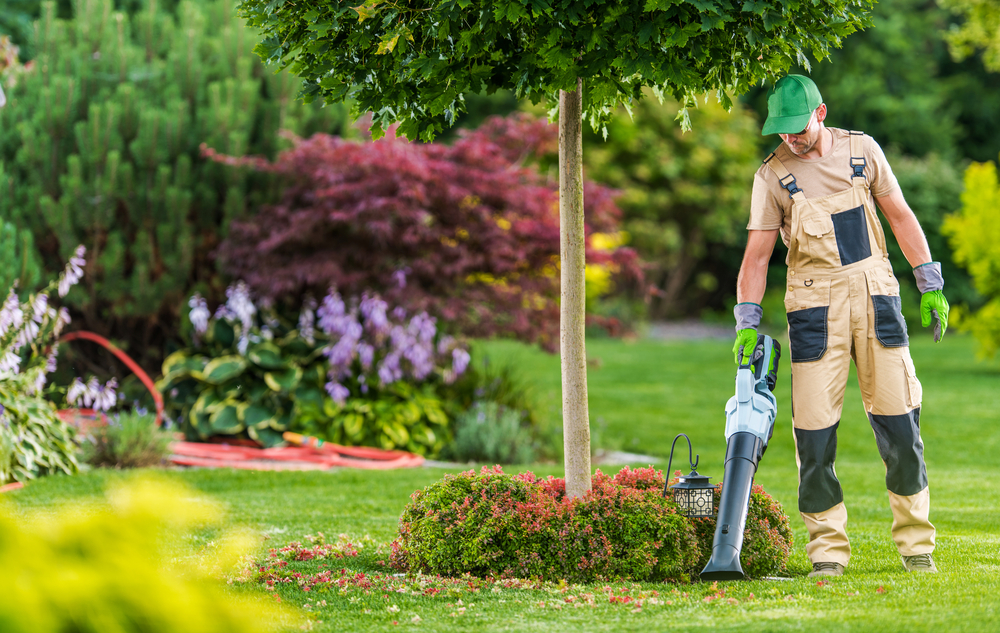
Contracts and Packages
If you decide on a weekly or every-other-week option for lawn mowing, be sure to ask for a contract. The contract should stipulate how often the grass will be mowed, what kinds of services you’ll receive, how much each visit will cost, how you’ll be billed, and available payment options.
Most lawn-mowing companies offer packages to provide lawn mowing with other lawn-care services. Some services include edging, reseeding, aeration, fertilization, application of pesticides and herbicides, disease treatment, weeding, trimming, leaf cleanup, and winterization. Packages can include weekly or monthly visits and can range from $50 to $200 for weekly visits and $100 to $300 for a monthly option.
Travel Fees and Gas Prices
Many mowing professionals will charge a travel or gas fee to get to your home. If many homeowners on your street use the same company, you may be able to negotiate a discounted rate. You may notice that these fees may fluctuate based on the changing gas prices in your area.
Additional Landscaping Work
Many homeowners opt to have additional landscaping work completed by the professionals that mow the lawn. Some additional landscaping services and their average national prices are:
- Aeration: $80 to $200
- Dethatching: $100 to $700
- Edging: $700 to $1,700
- Fertilization: $80 to $380
- Leaf removal: $200 to $500
- Pest control: $200 to $300
- Watering: $50 to $400
- Weeding: $40 to $120
Lawn-Mowing vs. Edging
Edging a lawn prevents the grass from growing over the edges of sidewalks, driveways, flower beds, and garden areas. Edging exposes the soil and creates a neat and tidy appearance. Edging for the first time will be more time-consuming and costly, but the upkeep can be fast and easy.
When and How Often Should I Mow My Lawn?
Mowing is a good way to keep your lawn looking good and healthy. Knowing what type of grass is growing in your yard is the first step to knowing how often to mow it. Cool-season and warm- season grasses grow at different rates and have varying recommended heights. It’s best to follow the rule to only cut a third off the blades of grass with every mowing. This practice results in a deeper root system and weed control. Cutting the grass down very short to avoid more frequent mowing will backfire and result in brown, burnt grass with weak roots. Avoid cutting grass when it’s wet, and keep the mower blades sharp for the best results.
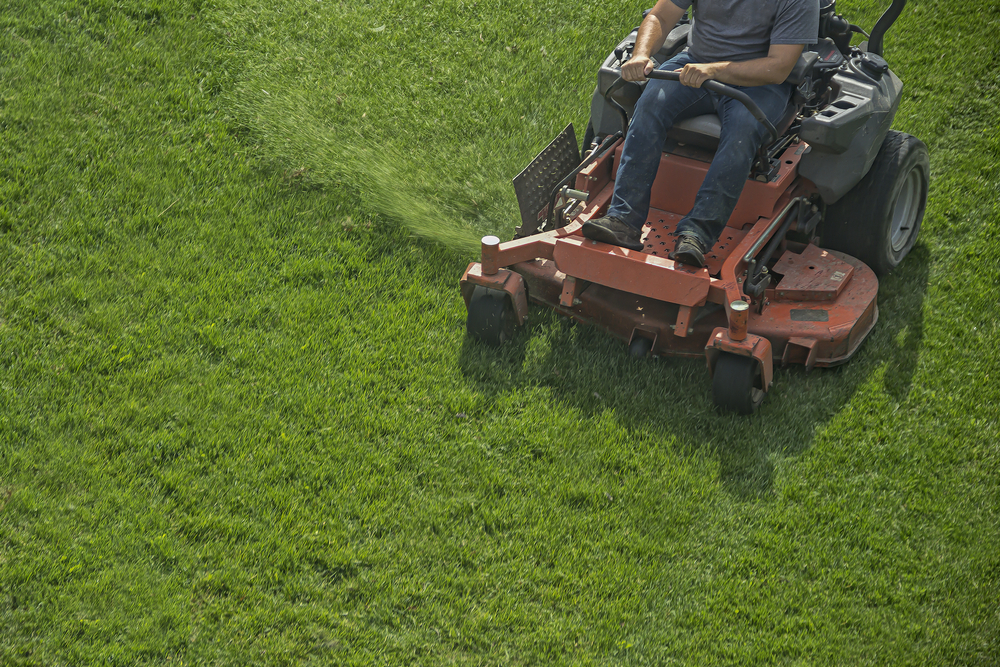
Long Grass
Long grass can protect the root system during the hottest of the summer months, but an overgrown lawn can be an eyesore. Long grass can flop over and cause brown spots and unhealthy areas. If the lawn is overgrown, it’s recommended to cut it at the highest blade setting. After waiting a few days, cut it a bit lower. The process should be repeated until the grass is at its recommended length. When long blades are cut at once, it can smother the lawn, stunt growth, and encourage mold growth.
Discoloration
When grass is cut too short, it can result in discoloration and brown patches. When the lower tender parts of the grass are exposed to harsh, direct sunlight, it will burn.
Weed Overgrowth
When a lawn is cut too short, it can cause the grass to get stressed and be burned by the sun. When this happens, weeds are encouraged to grow in those spots. Professional weed control can cost from $40 to $120 per visit. Ensuring that the lawn is free of weeds makes it look more attractive and eliminates spots for insects to hide.
Growing Season Considerations
The growing season for cool-season grass is in the spring and fall. Mowing frequency should depend on the amount of rainfall in your area and the watering and fertilizing schedule.
Local Laws
If you’re tempted to let the grass grow and not mow it, be aware that there are probably local ordinances regarding lawn height. Some areas have steep fines for neglecting a lawn or not mowing on a regular schedule. Check your local laws to know the regulations regarding lawn mowing and what fines and fees are attached.
Benefits of Getting Your Lawn Mowed
Mowing regularly has many benefits that include a neat appearance, healthy grass, and reduced risks of insects and pests. Regular maintenance can keep a lawn in good shape for years to come.
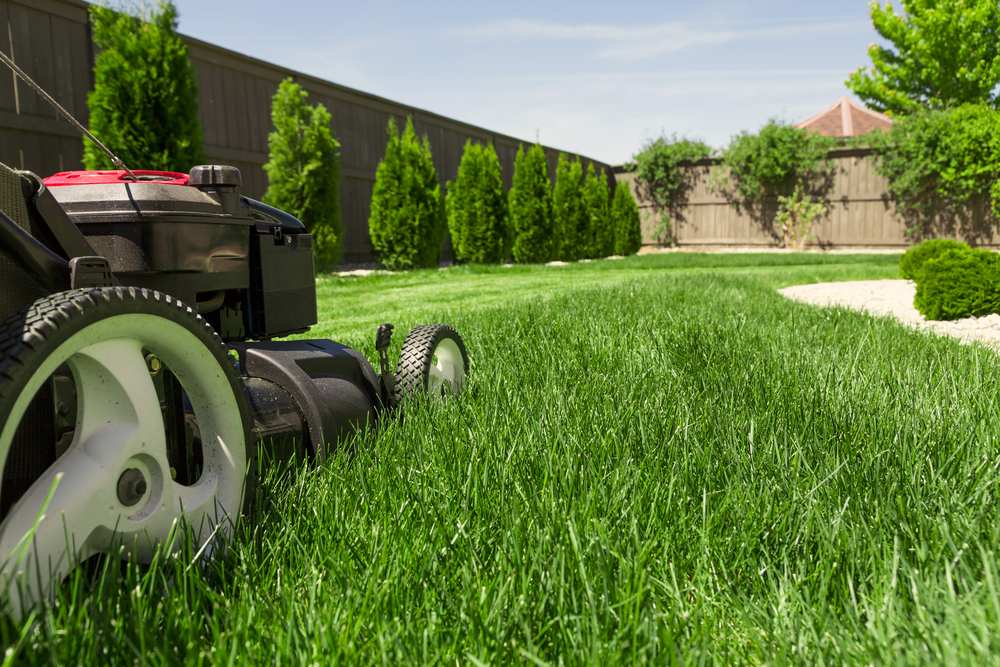
Grass Health
Maintaining a lawn with mowing, weeding, aeration, and other services prevents bare spots and discolored areas. Mowing with dull blades can cause a yellow appearance, and waiting too long to cut the grass can cause the leaf blade to bleach. Keeping the grass at its optimal length for its type results in vibrant blades with a strong root structure.
Reduced Weed Growth
Regular mowing helps prevent weed growth by keeping the grass lush and strong. Grass that is cut too short will wither and die, which provides space for weeds to grow.
Pest Prevention
A neglected lawn invites weeds and pests to make a home. Regular lawn care that prevents and removes weeds creates an uninviting area for insects.
Curb Appeal
A well-maintained lawn can boost the curb appeal of your home and make it more appealing to potential buyers when you decide to sell.
DIY vs. Hiring a Professional
Many homeowners choose to mow their own lawn to save money or because they enjoy the task. Hiring a professional is an excellent option for those who dislike mowing and have the income to cover the average cost of mowing a lawn. Others may not be able to physically operate a lawn mower or they don’t have the time to dedicate to lawn care. The best lawn care services have the right equipment and experienced professionals that have the knowledge to get the job done quickly and easily. Many homeowners prefer to leave the task to someone else after they consider the costs to buy and maintain a lawn mower. A gas-powered mower can cost $300, and a battery-powered or electric model can run approximately $200. A rider mower can range from $1,500 to $5,000, and a weed eater and leaf blower can cost between $80 and $200. Keep in mind that the costs of gas, maintenance, and repairs are not factored into these costs. When all these costs are taken into consideration, in addition to the cost of the time spent mowing, hiring a professional lawn service is a good option for many homeowners.
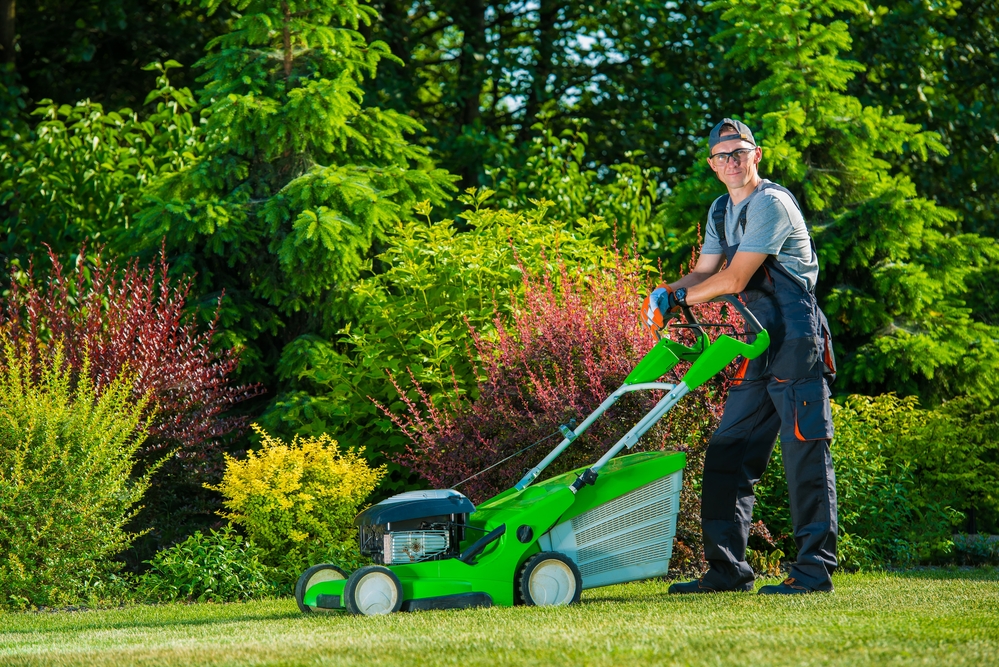
How to Save Money on Lawn-Mowing Costs
Lawns require a lot of work, and saving money on lawn-care costs is important to many homeowners. One way to save money would be to hire a cheap lawn-mowing service, but there are other ways to save without compromising on quality.
- Shop around. Get at least three estimates from reputable lawn-mowing companies in your area.
- Opt for a package. Many lawn-care companies will negotiate deals and discounts for frequent visits or for additional lawn-care services.
- Do some of the maintenance yourself. Clearing leaves, weeding, and removing yard debris can save money on labor costs.
- Check for coupons and discounts. Lawn-care companies compete for new customers and will post coupons or special orders on their website. Check often during the summer holidays for introductory offers or package deals.
Questions to Ask a Professional Lawn-Mowing Service
Asking a lawn-care professional the right questions about lawn mowing can minimize communication and maximize savings. Here are some questions to ask your lawn-mowing pro.
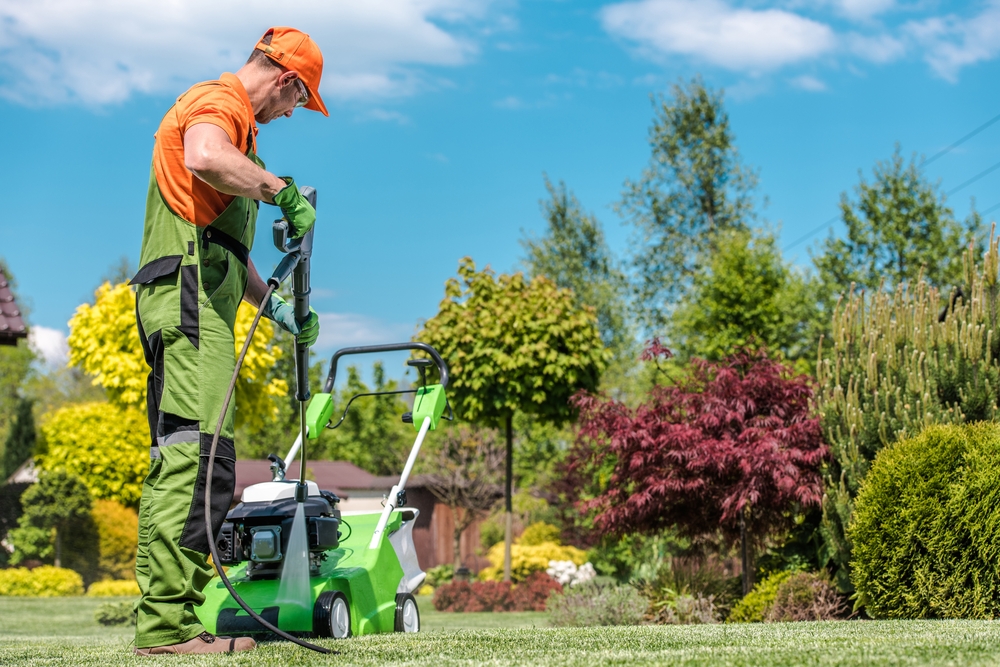
- Will you come and look at my lawn before providing a price quote?
- How long have you been in business?
- Do you have references?
- What types of services do you provide?
- How much does lawn care cost?
- Do your employees have any licenses or credentials?
- What services do you include with the contract?
- Do you use environmentally safe lawn-care products?
- Do you provide soil testing?
- What kind of equipment do you use?
- Who will take care of my lawn?
- If I notice a problem with my lawn, how soon can you look at it?
- What guarantees or warranties do you offer?
FAQs
Staying within your budget for lawn care can sometimes be challenging. Here are some frequently asked questions about lawn mowing and lawn care to help you hire the best professional for the job.
Q. How often is it usually necessary to mow a lawn?
Mowing once a week is usually sufficient at the height of the growing season. How often a lawn needs to be mowed depends on the amount of rainfall, watering schedule, and the rate of growth.
Q. What’s included in a mowing service?
What’s included in a mowing service depends on the individual company and the contract. A mowing service typically includes trimming, blowing clippings, and edging against concrete surfaces. Always double-check to be sure what’s included in your contract.
Q. Is frequent mowing good for grass?
Mowing on a regular schedule is good for grass growth and establishing a strong root system. Too frequent mowing can cause burnt grass, a weak root system, and discoloration.
Q. How fast does grass grow after mowing?
When grass is cut, it will increase the effort to produce volume to make up for the area lost during the mowing process. The grass will grow thicker with regular trimming.
Q. Should you mow your lawn every week?
A lawn should be mowed on average once a week during the height of the growing season. When growth starts to slow down at the end of the growing season, the frequency of mowing can also slow down.
Q. At what height should I set my lawn mower?
Grass should be cut at 3 to 3.5 inches for optimal health and aesthetics.
Q. How often should I water my lawn?
Watering in the morning before 10 a.m. is the best time so the root system can absorb the water before it evaporates. On average, lawns need 1 to 1.5 inches of water per week. If it’s not getting that amount of water from natural rainfall, then plan to soak the lawn in one watering session or divide it into two sessions per week.
Sources: Angi, HomeAdvisor, Lawnstarter, Thumbtack, Fixr, HomeGuide
